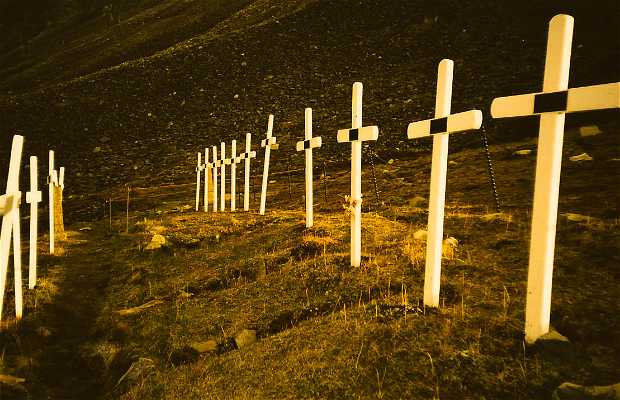You Are Forbidden To Die In Longyearbyen
Over fifteen years ago, in the summer month of June, we sit in a crowded restaurant serving fish and alcohol. The crowd is boisterous; voices buzz, alien chattering that both intrigues and isolates. It might be late or it might be early. The Arctic summer sun never moves far and on the Norwegian archipelago of Svalbard you can never be sure of the time. The sun neither falls nor rises, neither departs nor returns. In the summer, it merely shines.
The town is Longyearbyen – an apt name. Svalbard has two times: dark and light. On October 25th every year the sun dips below the mountains behind Longyearbyen and will not return for four months. When it returns on March 8th, the townspeople – only about 1500 of them – celebrate its return. How wonderful to worship something that can be seen and can be felt. Or maybe not.
My watch reads one in the morning. I exit the restaurant and the sun hits my eyes in a brilliant avalanche of light. I shield them and stumble out into the town. My vision adjusts and I aim to return to our hotel. The paved road winds through amber, grassy, snow-patched hills with electrical towers lining their spines. Up ahead I see a cluster of triangle-shaped wooden houses. Some are green, others blue and yellow. They resemble Lego blocks forgotten by some absent-minded giant. All stand on stilts. Longyearbyen is planted in permafrost; the soil is frozen year round. But the frost ranges from 10 to 40 metres deep and in the summer when the temperatures creep above freezing the shallower parts will thaw and melt. The stilts protect the homes from floods.
Snow covers the distant mountains. The tyrannical sun shines and the sky remains a piercing blue. Mammoth birds swoon and swoop through its vast space before resting on one of the gas pipes circling the town. A reindeer munches on brown grass completely indifferent to my approaching footsteps. Behind the mountains, hungry polar bears plot vengeance on the humanfolk responsible for their dwindling food supply.
Street lights surround the homes reminding summer tourists that there exists a far worse time to visit. I cannot but fear these extremes: the incessant black versus the unrelenting light. A year is measured in seasons, time experienced in change. How can you grow, adapt, evolve when you cannot feel time? How awful it must be to exist in that prolonged state like straight, empty tarmac stretched over a line. Flattened existence.
Dying is forbidden in Longyearbyen. It is not metaphorical, not a hedonistic, seize-the-day attempt at a full bodied life. Bodies do not decompose here – they are preserved in the permafrost, forever. They look alive. They seem alive. Longyearbyen has one local cemetery and it stopped accepting bodies seventy years ago. There is no old-age home here. The Governor says it is not a life-cycle community. For whom death lingers, other accommodations must be made.
Of course humans irrevocably adapt to their environment. People adjust. People endure. In the winter, school children cut-out pictures of the sun and tape them to the window.
I see the cemetery off in the distance: Rows of white crosses stain the hard ground. I imagine a snowy-haired woman with a feathered jacket and walking-stick solemnly open the gate and enter the blessed grounds. She approaches one marker and pauses. As she lays her hands on the cool wood and passes each inch with the back of her hand, as if warming a cool cheek, I know that this moment is forever hers. Will she leave Svalbard now? Will she go to a place where cycles of birth and death and life exist? The sun shines on the empty and lonely cemetery. No graves visited, no flowers laid.
At the water’s edge, I sit. Everything is still. I am young. I won’t remember this. I snap a photo and feel calmer. How can I explain Longyearbyen? I see a fishing boat struggling to shore; huffy voices follow. The stillness is broken and it is fine. People do live here. People do love here. People will map change, map life and death in their own ways. Nature and humanity will continue to co-exist in a fraught and tense relationship. The land is beautiful. Soon more voices will come. And more sun will shine and more night will fall and we will all come to fade into the sun. But I hope when my times comes to approach it, I will have felt the seasons.
Seasons do not exist in Longyearbyen.




